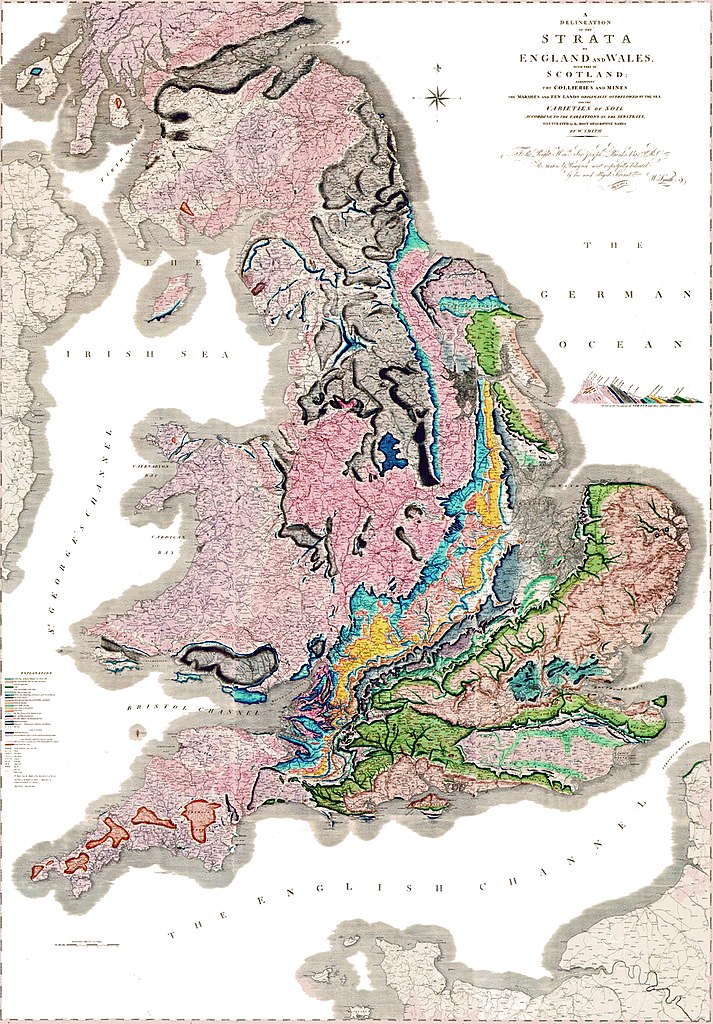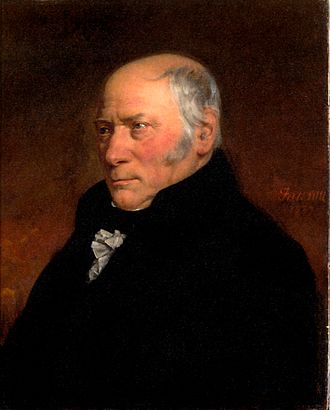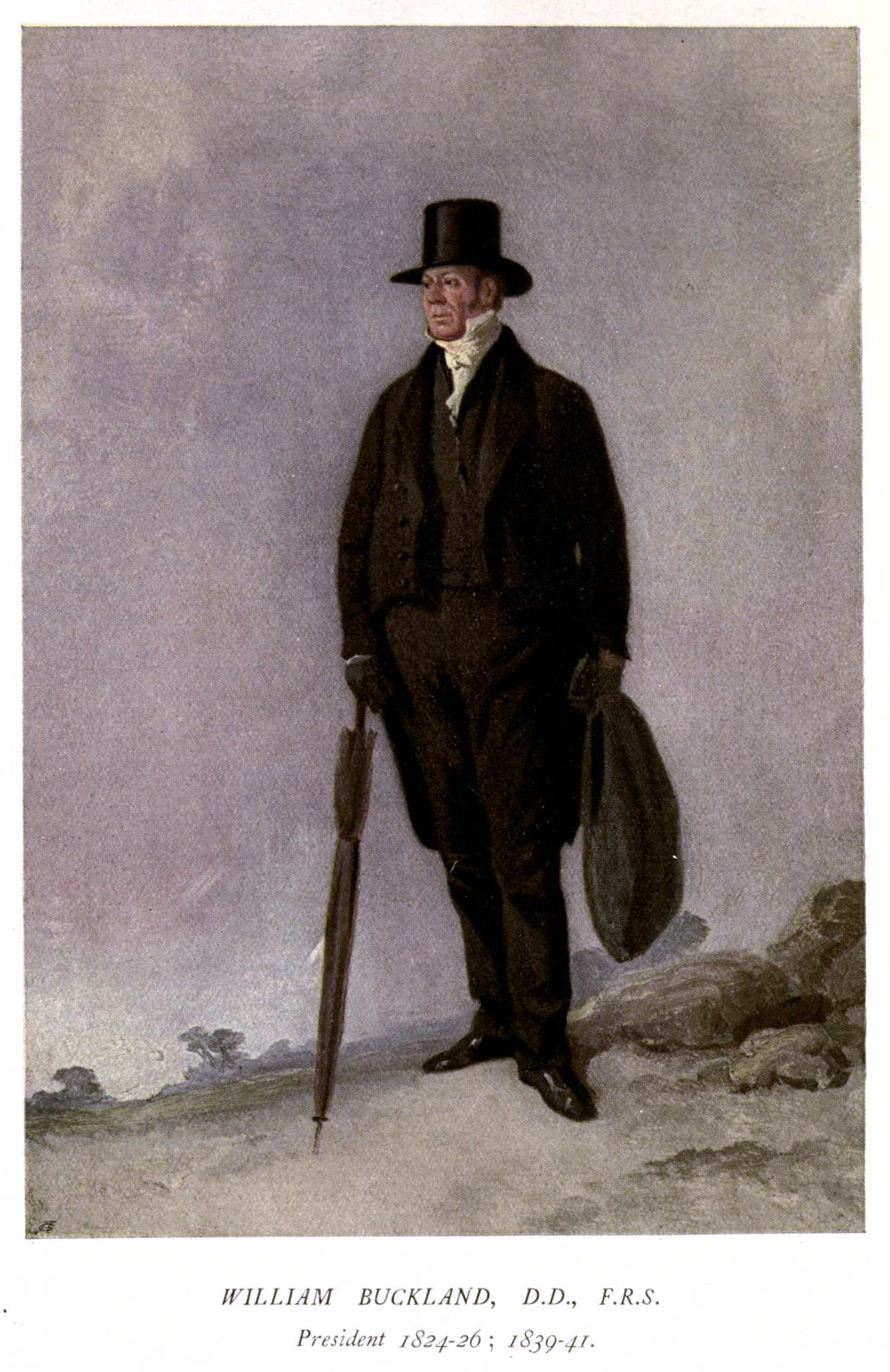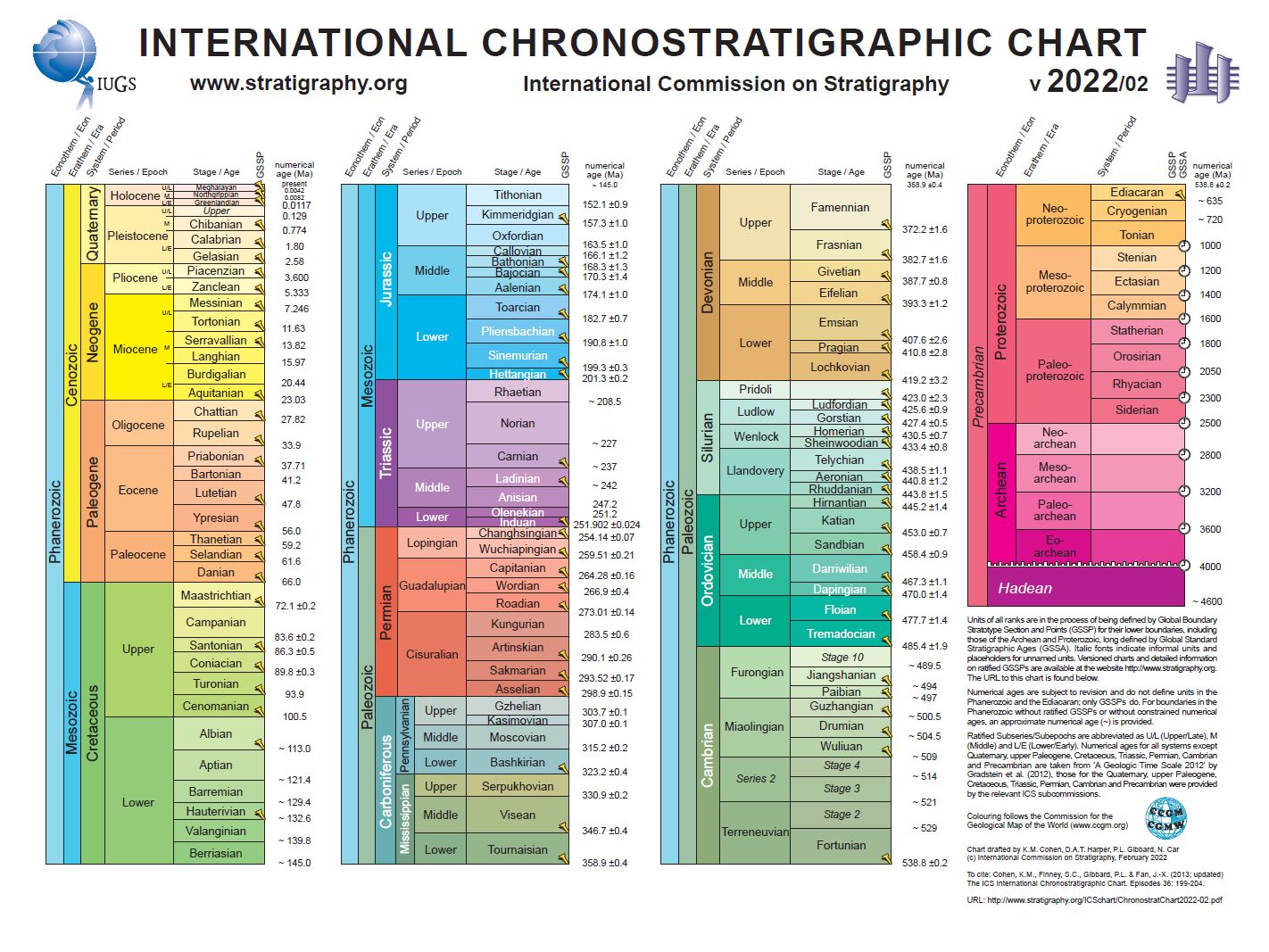Geologists glibly rattle off names like Precambrian, Ordovician, Jurassic and Cretaceous. You will know about the Jurassic thanks to all of those dinosaur movies that have been rolling out of Hollywood for over 30 years. But what does this all mean. So I am going to give you a quick oversight of the geological column, how it is divided up, and how it all fits together. Once we are done you will have some insight into where the Jurassic fits into the grand sweep of geological time. The Jurassic is singled out because it has embedded itself into our popular culture thanks to Jurassic Park.
He drove this enterprise to new heights
Back in the early 18th century, some clever men began to take note of the rocks around them, and began to map them out. The man who drove this enterprise to new heights was William Smith, who in fact was an engineer who had the task of building canals across England, canals which were extremely important in transporting raw materials and finished products during the Industrial Revolution.
Allowed Smith to bolt down the relative ages of the rocks
Digging canals through geological strata was indeed a fascinating exercise, and I am sure that Smith took note of the engineering characteristics of the various geological formations, for, just as is the case today, this information would have been incredibly useful when these same materials were encountered on projects elsewhere. Fossils within the various strata allowed Smith to bolt down the relative ages of the rocks, and a provided a powerful tool in correlating the strata both laterally and vertically as the canals advanced across the countryside.
Single-handedly he made the world’s first geological map
Smith then took it upon himself to map out the various geological formations that he encountered, with the final result being the world’s first geological map. The effort landed him in a debtor’s gaol, but that is another story entirely which we shall leave for another day.
He did his field work in a top hat and gown
Smith wasn’t the only player in those early days of stratigraphic study. Those pioneering geologists covered thousands of square miles on foot or public transport, with one of the famous palaeontologists - geologists of the day, William Buckland, doing his field work in a top hat and and academic gown. They worked out the geological sequences and their relative ages and they named the geological formations after places where they were first described, or where they majestically outcropped. New words crept into our lexicon – Cambrian, Devonian, Permian, Jurassic and Cretaceous are familiar to many of us and there are no prizes for guessing the origins of some of them.
All they could do was speculate as to their age
It was the work of Charles Darwin, and the less famous Alfred Wallace, who showed that the changes in the fossils between geological strata was due to evolution, and that long periods of time were required for these changes to occur. All the geologists could do at the time was to place the strata in the correct order and speculate as to their age. At the time there were no tools to date the rocks in any absolute way. Age dating techniques, based on radioactive decay, had yet to be invented, techniques which are now routinely used to date rocks with an astonishing degree of accuracy.
They would be astonished to know that the Earth is 4.5 billion years old
In spite of the limitations imposed by their technology, those early geologists did a fine job in classifying the rocks into geological periods. This has been refined even further as our technologies have improved. They would be astonished to know that the Earth is 4.5 billion years old – their slicing and dicing of geological time ended with the Cambrian Period, which started 545 million years ago. Everything earlier than that was known as the Precambrian – but no one knew how far back that that stretched. Today we know that the Precambrian makes up eighty-eight percent of geological time.
They encompass the entire sweep of geological time
Thanks to all the work carried out by the geological community over what is now hundreds of years, a standard geological column has been agreed on. It is divided hierarchically into varying time intervals – which, from the longest to the shortest, comprise Eons, Eras, Periods and Epochs. There are three Eons which from the oldest to the youngest comprise the Archaean, Proterozoic and Phanerozoic and which encompass the entire sweep of geological time from the formation of the Earth right up to the present.
Single-celled organisms provide clues about the early life of our planet
The Archaean and the Proterozoic are informally known as the Precambrian which ended approximately 539 million years ago. Seeing that this is a place for palaeontology, organisms with hard body parts – namely shells, bones and teeth – only occur in the Phanerozoic. These body parts are important to us as they are preserved in the geological record as fossils. Rocks older than the Phanerozoic, that is, of Precambrian age, contain no fossils, with only traces of single-celled organisms to provide clues about early life on our planet.
This is the Era in which the dinosaurs lived
The Phanerozoic is divided up into three Eras – the Palaeozoic, which means ‘ancient life’ the Mesozoic which means ‘middle life’, and the Cenozoic if you are American or Cainozoic if you are British, meaning ‘recent life’. If you have been hanging out here at the DinoZone for some time you will have heard about the Mesozoic – this is the Era in which the dinosaurs lived. The Phanerozoic is also divided up into Periods, based on fossil types – comprising the more familiar Cambrian, Ordovician, Silurian, Devonian, Carboniferous, Permian, Triassic, Jurassic, Palaeogene, Neogene and Quaternary.
So, this all may sound a little overwhelming, but the geological column illustrated here does a wonderful job in explaining it all.
The more deadly event was the end-Permian extinction
The sudden changes in fossil types between geological eras is due to mass extinction events, the most famous of which is the end-Cretaceous event which killed of the dinosaurs and seventy percent of all life on Earth. However, the more deadly event was the end-Permian extinction where ninety - seven percent of all life went extinct.
Perhaps their joints creak
There is a great mnemonic for remembering the geological periods which we had to learn in Geology 101. It goes like this: Camels Often Sit Down Carefully, Perhaps Their Joints Creak. So there you have it – you are now on your way to becoming an expert in stratigraphy and the geological column. Whilst you are about it, why not make up some geological mnemonics of your own, and leave them in the comments below.




